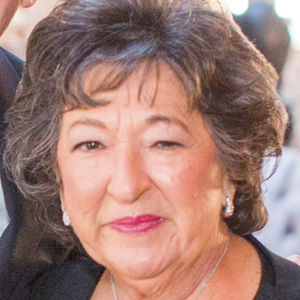Map-based works mark art roads taken
Published October 9, 2020
I’m not traveling these days, so I have more time to daydream and look at maps and travel brochures and think of great trips of the past and hopefully more to come.
An exhibition at the Kemper Museum of Contemporary Art in Kansas City in 2012 titled “The Map as Art” enthralled me and has stayed in my mind.
The 2012 exhibition was co-curated by then-Kemper Museum director and chief curator Barbara O’Brien and Katharine Harmon, author of “The Map as Art: Contemporary Artists Explore Cartography.”
It seemed as if every art museum I entered right before the pandemic and again recently has references to maps in many works. The Los Angeles County Museum of Art had a special exhibition featuring Julie Mehretu, who was born in Ethiopia and refers to her works as “story maps of no location.”
The painting “Transcending: The New International” caught my eye. According to the wall text describing the work: “This painting began with a map of Ethiopia’s capital city, Addis Ababa, which Mehretu fused with other African economic and political capitals creating a vast network of aerial views of the continent.”
The St. Louis Art Museum has a striking Mehretu on view.
On the same trip to California, I traveled to Palm Springs to the Palm Springs Art Museum and saw an incredible exhibition of the works of famous architect, interior designer and textile artist Alexander Girard. The catalog for the exhibition is titled “Alexander Girard: A Designer’s Universe” and makes references to Girard’s fictional map and worlds.
Then I thought about our own world famous video artist Van McElwee who recently was featured in the Whitaker St. Louis International Film Festival at Webster University with his work, “The Map is the Territory: New and Recent Works by Van McElwee.”
Another local treasure, Mel Watkins, has work that was featured in an exhibition of artists who work with maps as a theme in Michigan City, Ind., titled, “Seeking Location: Mapping & Borders in Art.” Much of this work was seen locally several years ago at Laumeier Sculpture Park. In a catalog of the Laumeier exhibition, “The River Between Us,” the curator writes:
“Mel Watkins’ Mississippi River Charts move the viewer through playful patterns and abstract shapes within the channel of the Mississippi River, creating a poetic depiction of the lives and patterns of movement that must have flowed throughout the ages along its riverbanks. Watkins draws on maps of the Mississippi River to represent the economic importance of the river as well as the environmental problems caused by the use of the river. She displays the beauty and struggles of the Mississippi River that have been in place from the beginning of our country to the present day.”
And I remember seeing a great exhibition of Leila Daw’s work at St. Louis’ Atrium Gallery years ago. Daw uses diverse materials to explore themes of cartography and feminism. She used skywriting to map the course of the Mississippi River in an earlier ag, when it bypassed what today is St. Louis.
Back to Harmon and her “The Map as Art: Contemporary Artists Explore Cartography.” Harmon writes,“Artists’ maps lead to unexpected destinations: places turned upside down or inside out, territories riddled with marks understood only by their maker, landscapes connected more to the interior mind than the exterior world. In an era of globalized politics, culture and ecology, contemporary artists are drawn to maps to express their visions. Using paint, salt, souvenir tea towels or their own bodies, map artists explore a world free of geological constraints.”
The New York Times says of Harmon’s book: “Artists have toyed with maps before — there’s Salvador Dali’s Surrealistic ‘Map of the World’ and Jasper John’s splotchy sendup of the Lower 48 for starters. But ‘The Map as Art,’ a new coffee table curiosity by Harmon, shows how much traction the idea has with artists today — Rand McNally seems a world away.”
Many art exhibitions worldwide have featured the map as art. “Mapping: Memory and Motion in Contemporary Art” at the Katonah Museum of Art in Westchester County, N.Y., was very provocative and gave viewers a fresh perspective to contemplate the meaning of maps and the significance of cartography as part of personal experience and identity. The artists went beyond the art of personal expression. They illustrated the larger meaning of maps and their function. This exhibition expanded the territory of thinking by blurring the lines of fixed boundaries in the precise nature of making accurate maps.
Gilbert Grosvenor, founding editor of National Geographic, is quoted as saying: “A map is the greatest of all epic poems. Its lines and colors show the realization of great dreams.”
Jill Harness, in a 2012 article in Mental Floss magazine, “11 Works of Art Made With Road Maps” says:
“Whether it’s a traditional Thomas Brothers map book or Google Maps Street View, most of us use maps on a least a fairly regular basis. It’s not all that surprising that we take them for granted, but fortunately there are plenty of artists out there to remind us just how beautiful the art of cartography can be.”
Harness goes on to show us 11 great artworks made with road maps, including a piece by artist Elisabeth Lecourt, who intricately folded maps into beautiful dresses.
I’m spinning my globe and wondering where in the world these creative artists came up with such unique ideas in using maps and making maps to express their artistic genius.















